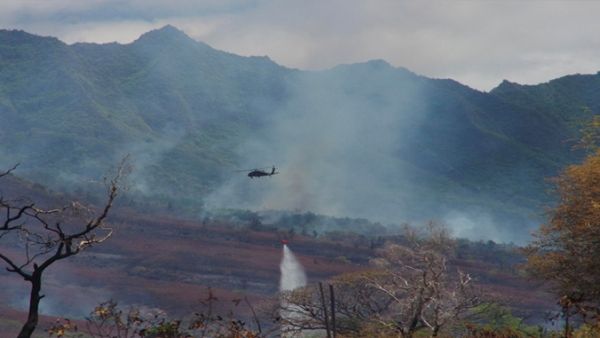Recent wildfires ravaging the West Coast highlight the importance of preparation and understanding the threat everywhere, including Hawaiʻi. A team at the University of Hawaiʻi at Mānoa will work to improve assessment and communication of unique wildland fire risk the state faces.
The UH Mānoa Water Resources Research Center (WRRC), the Wildland Fire Extension Program (College of Tropical Agriculture and Human Resources), and the Department of Civil and Environmental Engineering (College of Engineering) secured nearly $1 million in funding for the project. The grant is from the Federal Emergency Management Agency (FEMA) through partnership and cooperation with the Hawaiʻi Emergency Management Agency (HI-EMA) and UH Mānoa.
The project will develop a high-resolution fire risk index for Hawaiʻi using spatial data on historical fire occurrence, climate, vegetation and the built environment. The end-product will be a daily map of fire risk for the state published online that uses real-time climate products produced by WRRC and the UH-based ʻIke Wai program. This work will be led by Sayed Bateni (principal investigator), associate professor in civil and environmental engineering and WRRC, Clay Trauernicht (co-principal investigator), extension specialist in ecosystem fire in the Department of Natural Resources and Environmental Management, and Tom Giambelluca (co-principal investigator), director of WRRC.
Continue reading at University of Hawaii - Manoa.
Image via University of Hawaii - Manoa.


